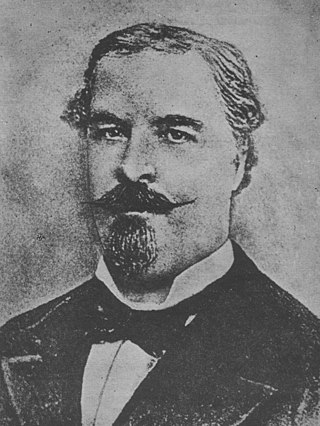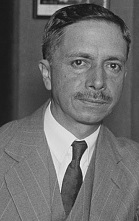
Mexican literature stands as one of the most prolific and influential within Spanish-language literary traditions, alongside those of Spain and Argentina. This rich and diverse tradition spans centuries, encompassing a wide array of genres, themes, and voices that reflect the complexities of Mexican society and culture. From ancient indigenous myths to contemporary urban narratives, Mexican literature serves as a poignant reflection of the nation's essence, inviting readers to explore its rich history, diverse culture, and collective aspirations.

José Milla y Vidaurre was a notable Guatemalan writer of the 19th century. He was also known by the name Pepe Milla and the pseudonym Salomé Jil. Son of a governor of the state of Honduras in the Federal Republic of Central America, José Justo de la Milla y Pineda and Mrs. Mercedes Vidaurre Molina, the daughter of a wealthy Guatemalan family. He was married to his cousin, Mercedes Vidaurre and had 7 daughters and sons.
Achi is a Mayan language very closely related to Kʼicheʼ. It is spoken by the Achi people, primarily in the department of Baja Verapaz in Guatemala.

Latin American literature consists of the oral and written literature of Latin America in several languages, particularly in Spanish, Portuguese, and the indigenous languages of Latin America. It rose to particular prominence globally during the second half of the 20th century, largely due to the international success of the style known as magical realism. As such, the region's literature is often associated solely with this style, with the 20th century literary movement known as Latin American Boom, and with its most famous exponent, Gabriel García Márquez. Latin American literature has a rich and complex tradition of literary production that dates back many centuries.
The culture of Latin America is the formal or informal expression of the people of Latin America and includes both high culture and popular culture, as well as religion and other customary practices. These are generally of Western origin, but have various degrees of Native American, African and Asian influence.

The Rabinal Achí is a Maya theatrical play written in the Kʼicheʼ language and performed annually in Rabinal, Baja Verapaz, Guatemala. Its original name is Xajoj Tun, meaning "Dance of the Tun" instrument also known as wooden drum. This is one of the few surviving performance pieces from before colonization. It takes place every year on January 25 and involves the entire community of Rabinal. A combination of movement, song, and instrumentation meld the piece together. This performance has been a part of Rabinal history for centuries, and continues to be a part of the culture today. The story of the Rabinal Achí centers on a historical feud between Rabinal and Kʼicheʼ, two neighboring cities. Colorful costumes and wooden masks are used to differentiate the characters as they play out their roles in the song-dance-drama.

Adrián Recinos (1886–1962) was a Guatemalan historian, essayist, Mayanist scholar and translator, and diplomat. Recinos was a student of national history, especially the Maya civilization and the ancient history of the K'iche' and Kaqchikel people.

Leyendas de Guatemala was the first book to be published by Nobel-prizewinning author Miguel Ángel Asturias. The book is a re-telling of Maya origin stories from Asturias's homeland of Guatemala. It reflects the author's study of anthropology and Central American indigenous civilizations, undertaken in France, at the Sorbonne where he was influenced by the European perspective.
The Achi are a Maya ethnic group in Guatemala. They live in various municipalities in the department of Baja Verapaz. The municipalities they live in are Cubulco, Rabinal, San Miguel Chicaj, Salamá, San Jerónimo, and Purulhá, in addition to parts of Granados and el Chol.

Rafael Arévalo Martínez was a Guatemalan writer. He was a novelist, short-story writer, poet, diplomat, and director of Guatemala’s national library for more than 20 years. Though Arévalo Martínez’s fame has waned, he is still considered important because of his short stories, and one in particular: The man who resembled a horse and the biography of president Manuel Estrada Cabrera, ¡Ecce Pericles!. Arévalo Martínez was director of the Guatemalan National Library from 1926 until 1946, when he became for a year Guatemala’s representative before the Pan American Union in Washington, D.C. He was the political and literary counterpart of his more famous countryman, Nobel Prize winner Miguel Ángel Asturias; while Arévalo Martínez was an unapologetic admirer of the United States, Asturias was a bitter critic of the New Orleans–based United Fruit Company, which he felt had plundered his country.

José Batres Montúfar (1809–1844) was a Guatemalan poet, politician, engineer and military figure.

María Josefa García Granados y Zavala was a Guatemalan intellectual, writer, journalist and poet of Spanish origin, and one of the greatest intellectual exponents of the independence of Guatemala, which was achieved in 1821. She was also a feminist ahead of her time, who with her strong and dominant character influenced Guatemalan culture. She was the sister of General Miguel García Granados, who was the first liberal president of Guatemala, and Adelaida García Granados, who was tutor of Petrona Álvarez, wife of General Rafael Carrera, lifelong conservative president of Guatemala. As his family was part of the Aycinena clan, they suffered exile and dispossession of their property by Francisco Morazán in 1829.

Luis Batres Juarros or Luis Batres y Juarros was an influential conservative Guatemalan politician during the regime of General Rafael Carrera. Member of the Aycinena clan, was in charge of writing most of the legislation that was enacted during this period. The liberal historians portray him as a villain in a despotic and tyrannical government headed by illiterate Raca Carraca - Rafael Carrera - who was taking each and every one of Batres recommendations since he was considered infallible; However, research conducted between 1980 and 2010 has shown a more objective biography of both Batres and Rafael Carrera and show that it was in fact Carrera who had the reins of the Conservative government.

Manuel Francisco Pavón Aycinena was a conservative Guatemalan politician during the regime of General Rafael Carrera. He was influential in the founding of the government's executive branch and held several Cabinet offices during his career.

Juan Chapín is a character created by Guatemalan writer José Milla y Vidaurre in his novel Un viaje al otro mundo pasando por otras partes -A trip to the other world, going through other parts-, which he wrote while in exile in Europe after the Liberal revolution of 1871. Milla y Vidaurre had been a close friend of general Rafael Carrera, who had ruled Guatemala until his death in 1865. Milla also worked in the Foreign Minister during Carrera's regime. From 1871 to 1874, Milla visited several countries in North America and Europe and used his character Juan Chapín - to whom he explains everything they come across in Europe - to represent the average Guatemalan of his day.

Ricardo Casanova y Estrada "The Great" was a Guatemalan Catholic priest that became the eleventh Archbishop of Guatemala from 1886 to 1913. He had a role opposing president general Manuel Lisandro Barillas Bercián (1885-1896), who eventually expelled Casanova y Estrada from Guatemala. After a generous amnesty granted by president general José María Reina Barrios on 13 March 1897, the archbishop returned to Guatemala and was received by large crowds and joy.

Miguel Ángel Asturias Rosales was a Guatemalan poet-diplomat, novelist, playwright and journalist. Winning the Nobel Prize in Literature in 1967, his work helped bring attention to the importance of indigenous cultures, especially those of his native Guatemala.

Sister Juana de la Concepción was a Guatemalan nun, writer, and poet.

The 1967 Nobel Prize in Literature was awarded to the Guatemalan writer Miguel Ángel Asturias (1899–1974) "for his vivid literary achievement, deep-rooted in the national traits and traditions of Indian peoples of Latin America." He is the first Guatemalan and the second Latin American author to receive the prize after the Chilean poet Gabriela Mistral won in 1945.

















